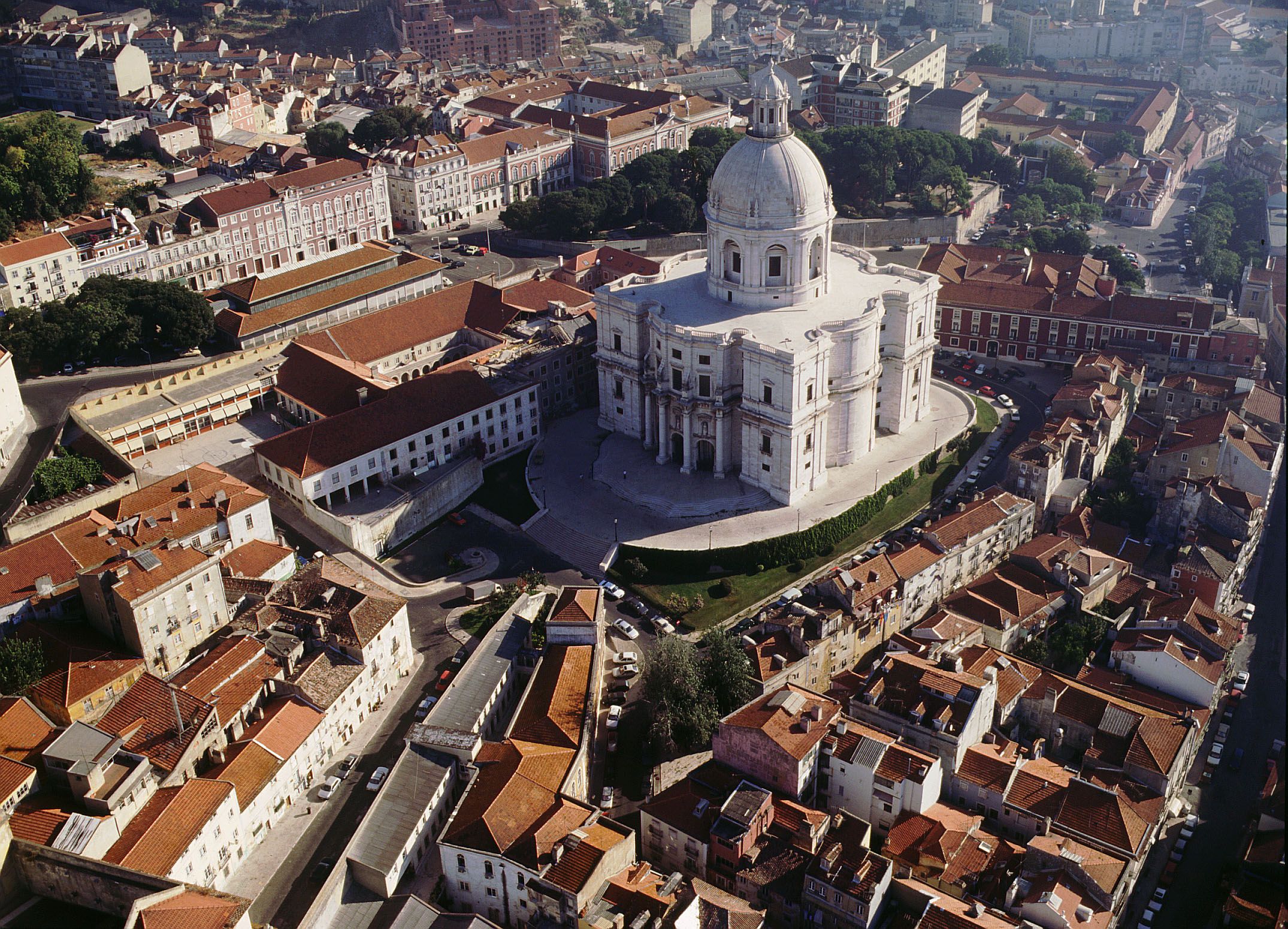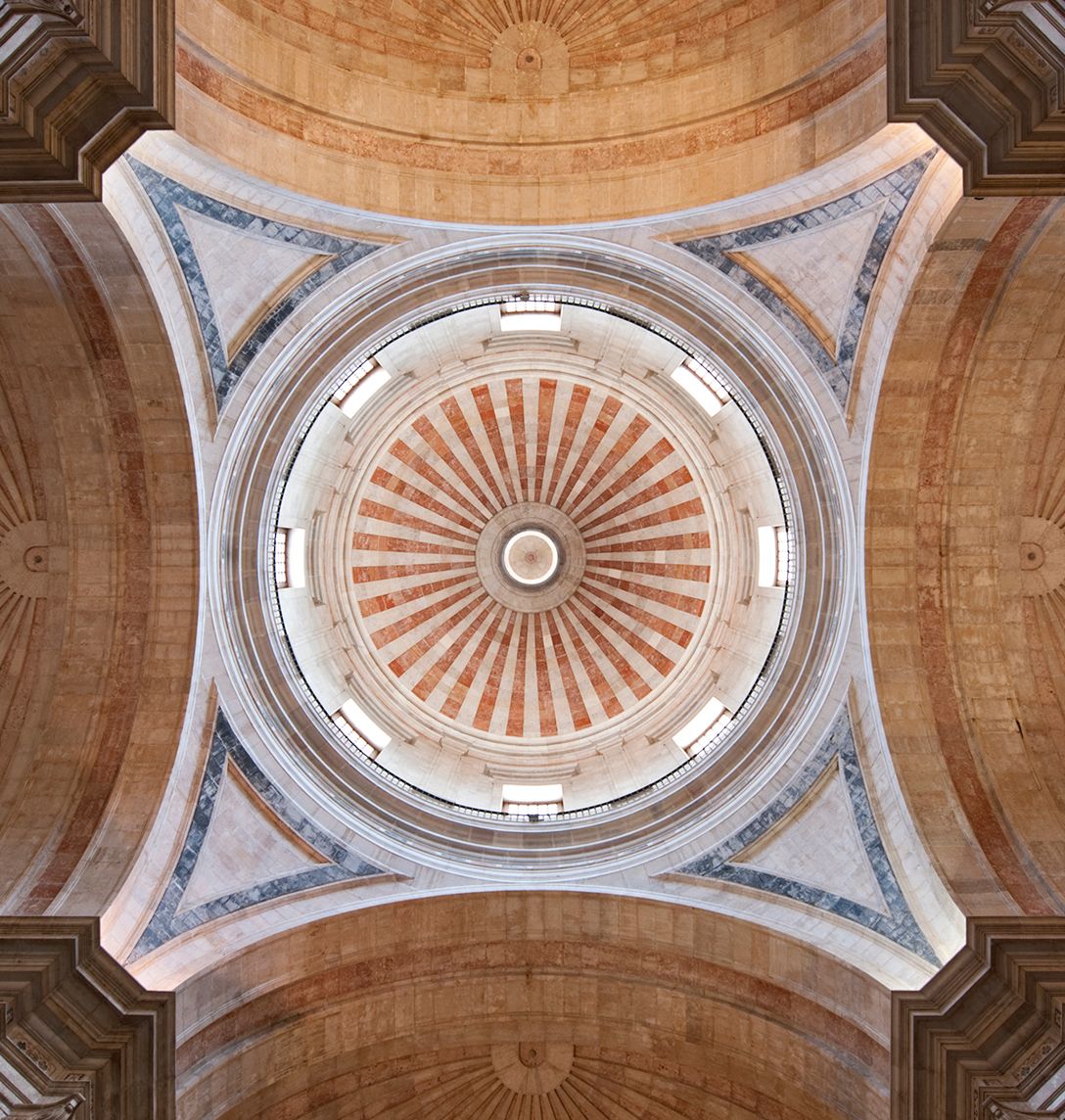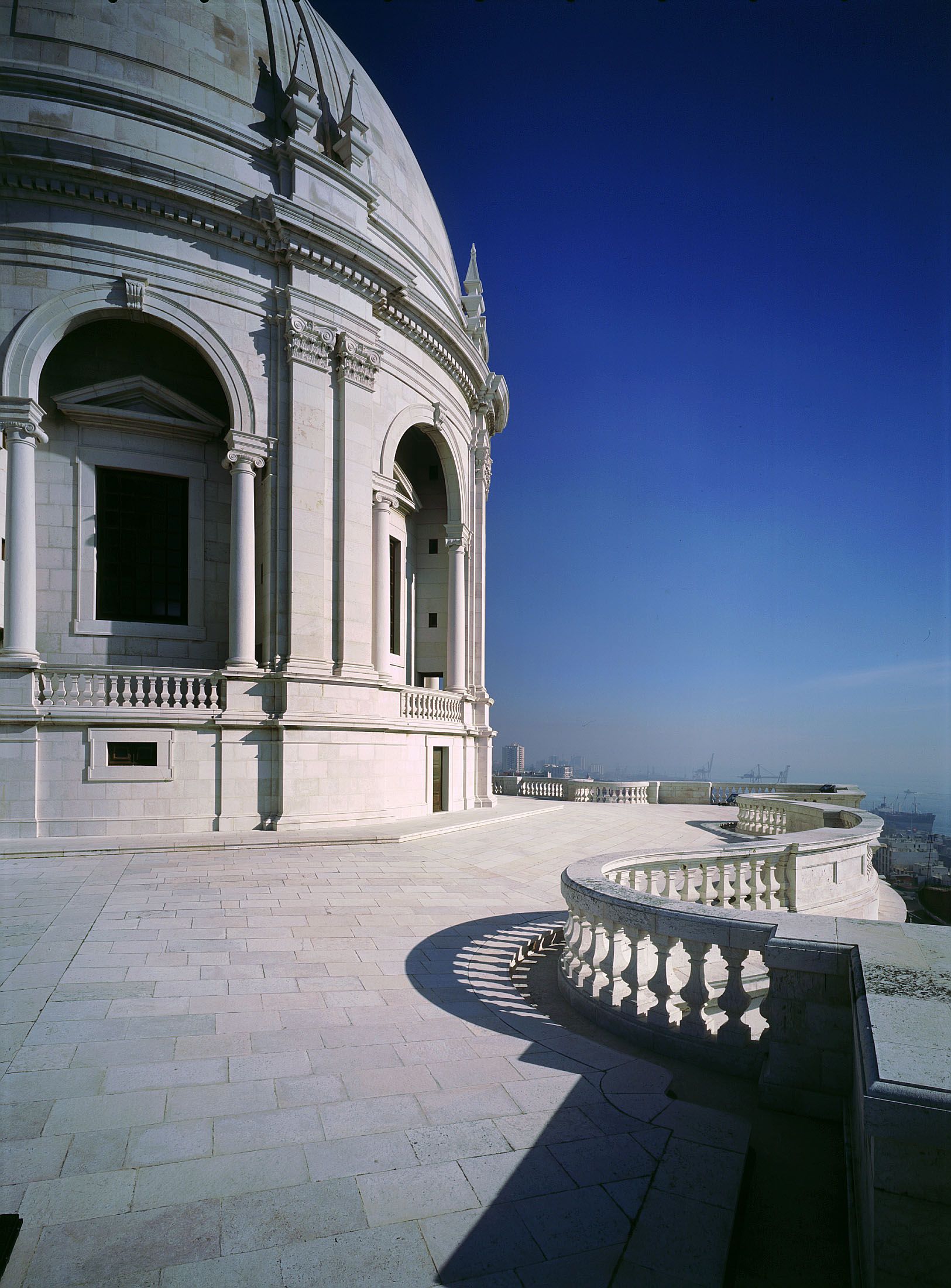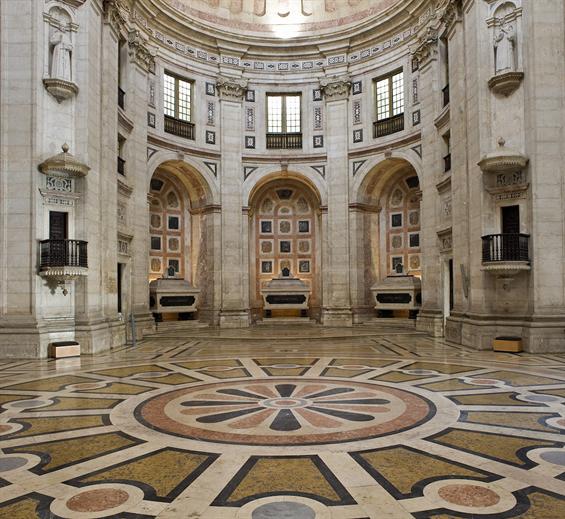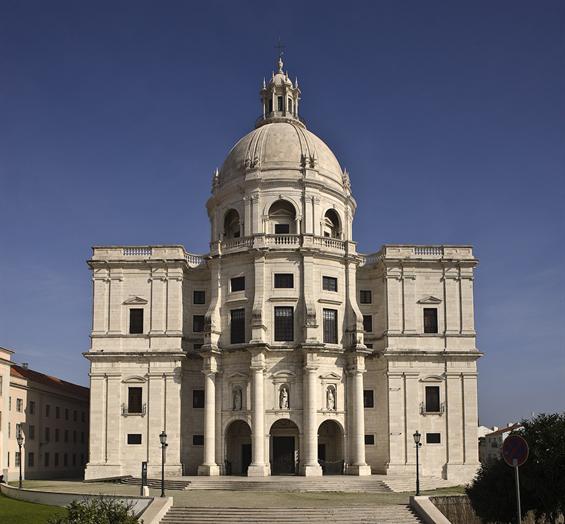Located in the historical neighbourhood of Santa Clara, it occupies the building originally intended to accommodate the church of Santa Engrácia, and contains the tombs of major personalities in Portuguese history, such as Sidónio Pais, Almeida Garrett, Humberto Delgado, Sophia de Mello Breyner Andresen, Amália Rodrigues or Eusébio da Silva Ferreira.
Founded in the second half of the 16th century, the building was totally rebuilt at the end of the 16th century with a design by the architect João Antunes. The building remained had no roof until the early 1960s, when the Estado Novo regime decided to finish the building, following a law from 1916 stating this temple should be adapted to serve as the National Pantheon. Between 1964 and 1966, a double concrete dome was designed, covered in lioz marble, the interior built with different types of stone was restored, and the remains of the personalities to be honoured were transferred to this place. It was inaugurated in 1966, on the occasion of the fortieth anniversary of the Estado Novo regime.
The main façade of the church reconciles to perfection the novelty of Italian Baroque with the most remarkable architectural practice in Portugal. At the entrance to the temple we come across the three portals, animated by a decorative work of great relief, attributed to the French sculptor Claude Laprade (1687-1740). In the national shield above the very rich central portal, we find the clear national trait of the church. Although it never opened to worship, it preserves, under the modern dome, the majestic space of the nave, animated by the decoration of colourful marbles, characteristic of Portuguese Baroque architecture.
A reference element in the profile of the city and offering a privileged view of the historic area of Lisbon and the Tagus River, it has been classified as a National Monument since 1910.
